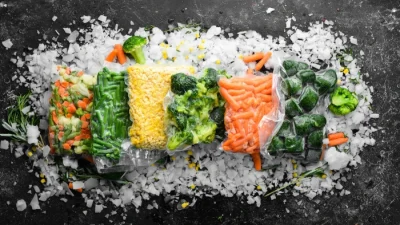What Is The Food Addicts Anonymous Food Plan
Warning: Undefined variable $post in /home/dietofli/public_html/wp-content/plugins/code-snippets/php/snippet-ops.php(584) : eval()'d code on line 3
Warning: Attempt to read property "ID" on null in /home/dietofli/public_html/wp-content/plugins/code-snippets/php/snippet-ops.php(584) : eval()'d code on line 3
The estimated reading time is 13 minutes
Warning: Undefined variable $post in /home/dietofli/public_html/wp-content/plugins/oxygen/component-framework/components/classes/code-block.class.php(115) : eval()'d code on line 3
Warning: Attempt to read property "ID" on null in /home/dietofli/public_html/wp-content/plugins/oxygen/component-framework/components/classes/code-block.class.php(115) : eval()'d code on line 3

While the concept of drug addiction and alcoholism may be familiar for you, the concept of food addiction is relatively new and it’s gradually gaining acceptance.
Although the Diagnostic and Statistical Manual of Mental Disorders (DSM-5) does not include a formal diagnosis of food addiction, undeniably, certain foods, such as those that are rich in fat and sugar, can be addictive as cigarettes, alcohol, or heroin, and more and more people are beginning to accept this idea.
Research shows that there’s a similarity between the brain processes which are being activated in drug addicts and those which are being activated during consuming hyper-palatable foods. (1)
Food addiction involves compulsive consumption of foods that activate dopamine – the feel-good chemical in the brain. When food addicts feel pleasure linked to increased dopamine levels from eating foods high in sugar, salt, or fat, they feel the need to eat again. They fail to notice signals of fullness and they continue eating even when they are satiated.
Food addicts easily lose control over their eating habits. They have difficulty getting out of the habit of binge eating even when this adversely affect their weight, overall health, and even relationships.
So, in this article, we’re going to explain what the symptoms of food addiction are, what Food Addicts in Recovery Anonymous (FA) and Overeaters Anonymous (OA) programs are as well as what the Food Addicts Anonymous (FAA) and Overeaters Anonymous food plan are.
Symptoms Of Food Addiction
The most common symptoms of food addiction are:
- Overeating
- Obesity (as well as health conditions, such as heart disease and diabetes)
- Obsession with weight or food
- Undereating
- Bulimia
- Compulsive dieting
- Compulsive exercise
- Isolation, shame, depression are associated with food or bodyweight or image.
How Do You Eat With Food Addiction?
People who have food addiction show the following eating behaviours:
- Keep eating even when they’re full
- Often wind up eating more food than they planned
- Eat certain foods in such huge quantities that they begin eating food instead of hanging out with their friends or family, practising a hobby, exercising, or workings
- Worry about limiting the intake of certain foods or not eating certain foods at all
- Eat certain foods to the point of feeling nauseous
What Is Food Addicts In Recovery Anonymous (FA)
FA, a 12-step program, is an organization that includes people that are recovering from food addiction through sharing mutual support and experience. It was organized formally in 1998 and it works following the principles of the Twelve Steps of Alcoholics Anonymous.
The FA program helps its members to maintain healthy body weight and achieve freedom from food addiction.
A major focus of the program is abstinence, which has a clear definition: Members should have measured and weighed meals and should not eat anything in between, including sugar and flour. They should also avoid individual foods that trigger binge eating.
Members in FA are required to consume fruits, vegetables, whole grains, dairy products, and proteins. They also prepare their own meals at home while being guided by a sponsor who offers them daily support with the goal of recovering from food addiction. Members can eat in restaurants as well.
In FA, there’s a food plan designed for each individual. Members are required to plan their meals each day with the help of a medical professional and sponsor with the aim of devising a food plan that will help them achieve a healthy weight. Having a measured food plan enables them to achieve freedom from cravings and obsession with food.
FA members are not allowed to eat flour and sugar as these ingredients trigger cravings for them that they can’t control.
Anyone who wants to stop eating compulsively can join FA, regardless of their age, gender, weight, religion, or health conditions. And it’s free
The goal of FA is not to design weight loss diet plans. The program does more than that. It focuses on helping food addicts recover mentally, physically, and spiritually from food addiction.
FA members have found a way to change their relationship to food as well as the way they think about it by following a recovery program.
They’re required to follow a food plan with their sponsor, read Food Addicts and Alcoholics Anonymous literature, regularly attend meetings, meditate, hang out with other members every day as well as guide and motivate new members.
What Is The FAA Food Plan?
The Food Addicts Anonymous Meal Plan is offered as a guide to food addicts. Rather than as a diet, the meal plan is meant as a lifestyle change in your eating behaviour.
According to the FAA Food Plan, a breakfast includes one dairy, one protein, one grain or vegetable, and one fruit. Tofu meat or lean meat are substitutes for eggs. Other acceptable options are oatmeal, berries, and skim milk.
Then, FA members are required to have lunch 4 hours after breakfast. Their lunch includes one protein, like lean steak or white-meat chicken, one fresh vegetable, and one cooked vegetable, like carrots, Brussels sprouts, or broccoli. It also includes half a daily oil. Men can also eat one starchy vegetable, grain, or fruit.
FA members are required to have dinner 5 hours after lunch. Their dinner includes one fresh vegetable, one cooked vegetable, half a daily oil, one protein, and one grain.
FA members can have a snack around 5 hours after dinner.
Following the FAA Food Plan helps FA members achieve abstinence. This also helps them get familiar with the main basics of healthy eating and heal their organs.
The food plan requires a way of eating which doesn’t include wheat, flour, sugar as well as artificial sweeteners, pasty and greasy foods. It also limits fat intake to a proper level.
Additionally, FA members can eat clear soup before lunch or dinner. Also, the daily oil requirement is one serving and two servings for women and men respectively.
The majority of food addicts succeed in achieving a healthy weight as well as in keeping weight off by sticking to this food plan. And if some keep losing weight after they’ve reached a healthy weight or if an underweight person fails to gain weight, with the help of a doctor and a sponsor, changes are made so as to regulate one’s weight.
In addition, the food plan includes a clear definition of abstinence. The goal of the FA members is to refrain from eating foods they crave. If members want or are tempted to make changes to the food plan, i.e. add or subtract certain foods so as to suit themselves, they’re advised to discuss such changes with a sponsor.
FA members are required to follow the following guidelines associated with the meal plan:
- Search for hidden names of wheat, flour, and sugar that may be written on the labels on all canned or packaged foods, dressings, marinades, salt, and spices.
- Remember that terms, such as sugar-free, lite, sugarless, low calorie, or light, written on product labels don’t mean sugar isn’t included.
- Measure and weigh foods in accordance with the specifications included in the food plan. Not eating foods in the recommended amount can trigger their physical craving and cause them to be addicted to food again. To measure and weigh food, members can use measuring spoons and cups as well as a scale.
- Consume fresh foods. If they can’t find fresh fruit, they should eat canned or frozen fruit. If they choose to eat canned fruit, they need to make sure it’s packed in its own juice or in water.
- Consume red meat 3-5 times a week. Substitutes for red meat include fish, beans, tofu, chicken, low-fat cottage cheese, tempeh, and low-fat ricotta.
- Avoid using thickeners.
- Sugar-free vegetable cocktail juice or tomato juice can be used as a substitute for a cooked vegetable.
- Two or more proteins can be eaten as a substitute for one protein serving. For instance, ½ cup of pinto beans and 2 ounces of cooked ground meat substitutes 4 ounces of protein.
- Avoid caffeine. However, they can consume decaffeinated tea and coffee, water, carbonated water, and herbal tea.
- The food plan may help lower increased levels of cholesterol and triglyceride caused by excessive consumption of fats and carbohydrates. Those who have increased levels of cholesterol should consume red meats and eggs up to three times per week.
- Those who have hypertension and are required to eat a low sodium diet should consume fresh or frozen foods. Additionally, they should always read product labels for sugar and sodium.
- If someone has constipation, it’s recommended that they drink 8 glasses of water a day. They should also walk and exercise.
- Members can use 1 per cent of skim milk as a coffee lightener.
The FAA food plan recommends the following suggestions for achieving abstinence:
- Following all the recommendations in the FAA food plan will help FA members become mentally, physically, and spiritually well. The food plan creates a balance between carbohydrates and proteins in order to promote steady levels of blood sugar as well as a stable metabolism, which is important to prevent binges and cravings.
- The eating program of each FA member needs to be reviewed by their doctor and members need to follow their suggestions.
- In order to stay committed to recovery, FA members should actively participate in the fellowship.
- Members should write down their food as this will make shopping easier as well as prevent members from making last minute choices when they’re hungry. Additionally, reviewing their meal plan with their sponsor every day will make it easier for them to plan healthy meals and assert their commitment to maintaining abstinence.
- Members are advised to eliminate anything included in the food program that is or becomes an issue for them.
- Members should weigh themselves only once a month.
- Members should sit down when eating meals and eat slowly.
- It’s recommended that members have one vegetarian day a week. They can substitute meat for wheat and soy protein.
- Members should eat poultry or fish on a daily basis if this is possible.
- Members should be careful about products labelled as fat-free, low-fat, or low-calorie, as such products often contain flour or sugar.
- The FAA food plan recommends that members take one multi-vitamin every day. However, they need to make sure that vitamins don’t contain wheat, flour, or sugar as well as take medications that don’t contain any of these ingredients.
- Members should ask for what they need when eating in restaurants.
- Members should not eat any grain or starchy vegetables more than three times a week.
What Is The Overeater's Anonymous Food Plan?
Overeaters Anonymous (OA), a 12-step program, is an organization that has designed 9 Tools with the aim of helping people recover from compulsive eating. By living and working the 12-step program created by OA, people can recover physically, emotionally, and spiritually. The 9 Tools include:
- A Plan Of Eating: This food plan serves as a guide to avoid addictive foods and refrain from destructive eating behaviours.
- Meetings: OA offers virtual as well as face-to-face meetings all over the world. Meetings help OA members get familiar with the 12 Steps and 9 Tools.
- Sponsorship: Sponsors help members of OA work the 12-step program.
- Writing: By writing down their problems, OA members can see situations from a clear perspective.
- Telephone: By reaching out to one another to find support for themselves as well as offer other people help
- Literature: OA offers pamphlets and books that help them learn how to work the 12-step program.
- Anonymity: This Tool protects OA members from gossip and helps them feel free to express themselves.
- Action Plan: This helps OA members incorporate the rest of the Tools.
- Service: Any type of service helps them connect with others who are struggling with the same problem.
When it comes to the Overeaters Anonymous meal plan, this plan does not include specific recommendations, suggestions, or restrictions for calorie intake or foods. Instead, it is designed with the aim of guiding one’s recovery with the help of a dietitian or physician.
The main focus of the food plan is abstinence from compulsive eating as well as destructive food behaviours.
What’s characteristic about the OA food plan is that it is individualized, which means that members can design an eating plan for themselves and get support along the way.
If a member’s food plan doesn’t benefit them, they can design a new one.
When it comes to what foods OA members should eat, OA offers prompts on various worksheets and pamphlets.
What Should Food Addicts Eat?
Based on all of the information presented above, it can be concluded that food addicts should have three meals and one snack a day. They should avoid consuming triggers (addictive) foods, such as foods high in sugar, salt, and fat. They should also avoid eating flour, refined grains, and processed foods. When it comes to meat and dairy, they should consume them in very small amounts and less frequently.
Food addicts should consume fresh fruits and vegetables, cooked vegetables, whole grains, and proteins.
Conclusion
- Certain foods, such as those rich in sugar and fat can be addictive.
- Addictive foods activate the reward system in the brain.
- The most common symptoms of food addiction are overeating, obesity, obsession with weight or food, undereating, bulimia, compulsive dieting, compulsive exercise, as well as isolation and depression associated with bodyweight or body image.
- People who have food addiction show destructive eating behaviours.
- Food Addicts In Recovery Anonymous (FA) is an organization that helps people recover from food addiction.
- FA members are required to measure and weigh meals as well as refrain from consuming sugar, flour, and individual addictive foods.
- They’re required to eat fresh fruits and vegetables, cooked vegetables, whole grains, protein as well as dairy products in small amounts.
- FA members plan their meals every day with the help of their sponsor or doctor.
- FA members need to follow certain guidelines related to their meal plan.
- The FAA food plan offers certain suggestions for achieving abstinence.
- Overeaters Anonymous (OA) is an organization that helps people recover from compulsive eating. And to achieve this, they’ve designed 9 Tools.
- The main focus of the OA food plan is abstinence from destructive food behaviors and compulsive eating.
- Food addicts should consume fresh fruits and vegetables, cooked vegetables, whole grains, and proteins.
Sources and references
The Food Addicts Anonymous Food Plan includes specific foods that people with food addiction should consume or avoid consuming.














